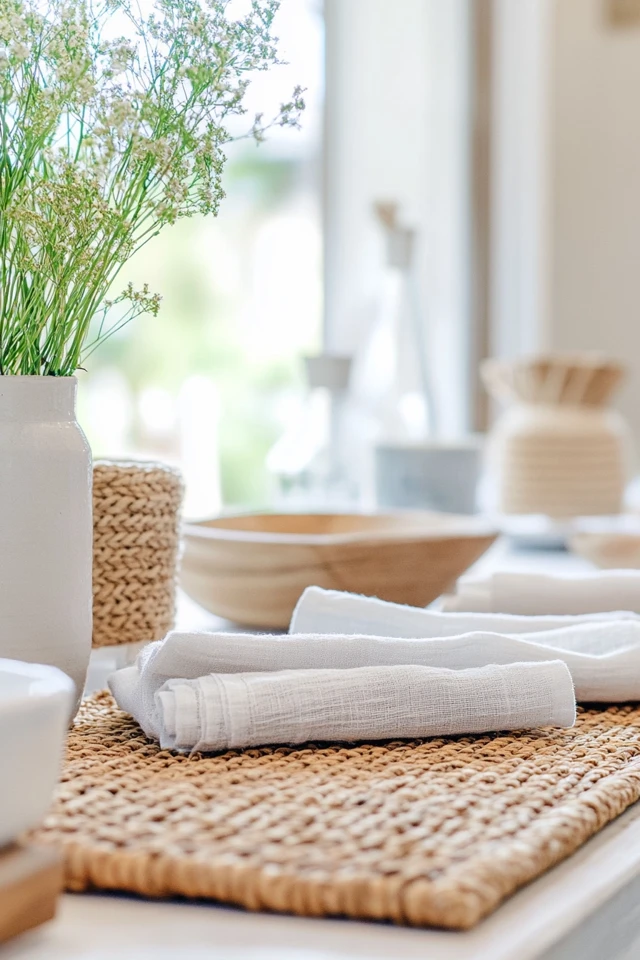When it comes to designing a coastal dining room, the goal is to bring the light, breezy feel of the seaside into your home. Think natural textures, soft colors, and a design that flows effortlessly, just like the waves. A bright and airy coastal dining room creates the perfect space for casual meals, family gatherings, or even a relaxed dinner party that feels like it’s right on the shore.
I remember transforming a client’s dark, heavy dining room into a coastal-inspired haven, and the impact was magical. By swapping heavy curtains for light linen, adding a driftwood-style table, and incorporating airy lighting fixtures, we created a space that felt open, fresh, and perfect for any occasion. Here’s how you can achieve the same look in your own home.
1. Start With a Light and Neutral Color Palette
Why It Works:
Coastal design thrives on light, neutral tones that mimic the natural beauty of the beach. Whites, creams, and sandy tones form the perfect base, while soft blues and greens add a pop of color.
How to Use It:
- Paint the walls in a crisp white or soft beige for a fresh, open feel.
- Use light wood tones for furniture to echo driftwood found by the shore.
- Incorporate accents in seafoam green, sky blue, or light gray for subtle coastal touches.
Pro Tip: For an extra coastal vibe, consider adding shiplap to the walls or ceiling.
2. Incorporate Natural Materials
Why It Works:
Natural materials like wood, rattan, and linen connect the space to the outdoors and evoke the essence of a seaside retreat.
How to Use It:
- Opt for a dining table made of reclaimed wood or with a weathered finish.
- Use rattan or wicker chairs to bring texture to the space.
- Add a jute or sisal rug under the dining table to anchor the room with a touch of coastal charm.
Pro Tip: Balance the earthy textures with smooth, airy fabrics to keep the room feeling light.
3. Maximize Natural Light
Why It Works:
Coastal spaces are known for their abundance of natural light, which makes the room feel fresh and open.
How to Use It:
- Replace heavy curtains with sheer linen drapes or leave windows bare to let sunlight flood the room.
- Use mirrors strategically to reflect light and make the space feel larger.
- Choose furniture with lighter finishes that won’t absorb light.
Pro Tip: If you don’t have large windows, consider adding a skylight-inspired light fixture to mimic natural sunlight.
4. Choose the Perfect Coastal Dining Table
Why It Works:
The dining table is the centerpiece of the room, and its design sets the tone for the entire space.
How to Use It:
- Go for a natural wood table with a weathered or whitewashed finish.
- Opt for a round table to encourage a relaxed, intimate dining experience.
- For larger spaces, a driftwood-inspired rectangular table adds drama and style.
Pro Tip: Pair your dining table with a linen runner in neutral tones for an effortless coastal look.
5. Add Statement Lighting With Coastal Flair
Why It Works:
A statement light fixture not only illuminates the space but also enhances the coastal theme.
How to Use It:
- Install a rattan or bamboo pendant light for a relaxed, beachy feel.
- Use a chandelier made of natural materials like capiz shells or driftwood.
- Incorporate glass lighting fixtures to mimic the clarity of ocean water.
Pro Tip: Choose warm white bulbs for a soft, inviting glow.
6. Accessorize With Coastal Textures
Why It Works:
Textured accessories add depth and reinforce the beach-inspired theme.
How to Use It:
- Layer the table with woven placemats, linen napkins, and ceramic dinnerware.
- Display a centerpiece of dried pampas grass, fresh eucalyptus, or a bowl of seashells.
- Add throw pillows with coastal patterns to nearby seating for a cohesive look.
Pro Tip: Avoid over-accessorizing; the coastal style is all about simplicity and ease.
7. Incorporate Coastal Art and Decor
Why It Works:
Wall art and decor are an easy way to bring the seaside indoors without overwhelming the design.
How to Use It:
- Hang prints of seascapes, coral, or nautical maps on the walls.
- Use large-format art to create a focal point, like a serene ocean photograph.
- Add small decor items, like driftwood sculptures, starfish, or hurricane lanterns.
Pro Tip: Stick to a cohesive color palette for your decor to maintain the bright, airy vibe.
8. Use Soft and Layered Textiles
Why It Works:
Textiles soften the space and create an inviting atmosphere for family meals or gatherings.
How to Use It:
- Drape a lightweight linen tablecloth or runner over the table.
- Add seat cushions in light, natural fabrics for extra comfort.
- Layer a throw blanket over a bench or chair for a casual, cozy touch.
Pro Tip: Choose textiles in solid colors or subtle coastal patterns like stripes or waves.
9. Bring the Outdoors In With Greenery
Why It Works:
Adding greenery to the dining room keeps the space fresh and lively, enhancing the connection to nature.
How to Use It:
- Use potted plants like fiddle leaf figs or snake plants to add height and texture.
- Place small succulents or air plants on the dining table or sideboard.
- Incorporate fresh flowers or greenery for a pop of color.
Pro Tip: Stick to low-maintenance plants that thrive indoors to keep the look effortless.
10. Anchor the Room With a Coastal Rug
Why It Works:
A rug grounds the dining area and adds an extra layer of texture and warmth.
How to Use It:
- Choose a jute or sisal rug for a natural, coastal vibe.
- Opt for a light-colored area rug with subtle wave or stripe patterns.
- Make sure the rug is large enough to fit under the dining table and chairs.
Pro Tip: Look for rugs that are easy to clean and durable, especially in high-traffic areas.
Picture Gallery
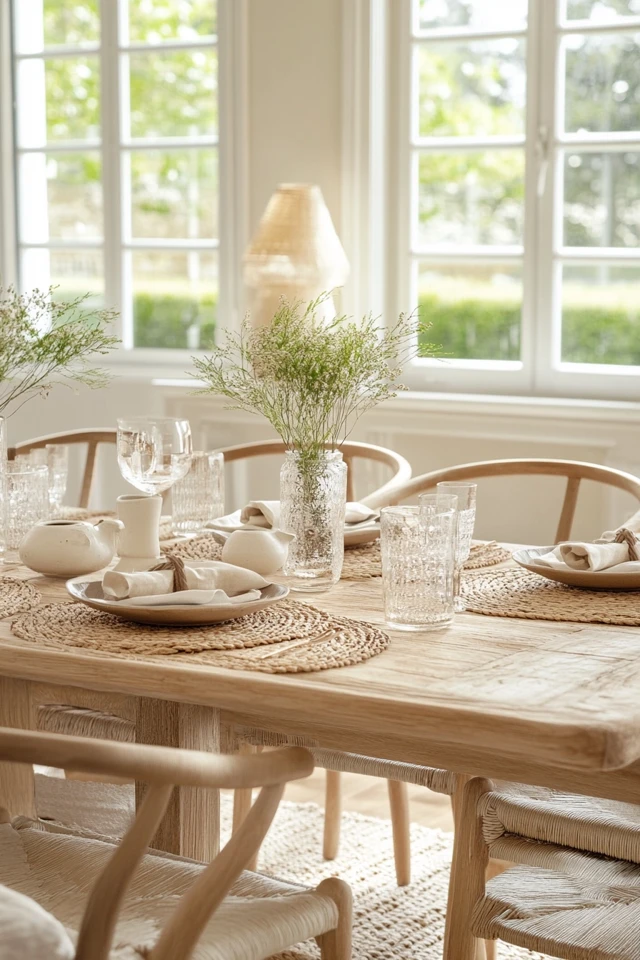

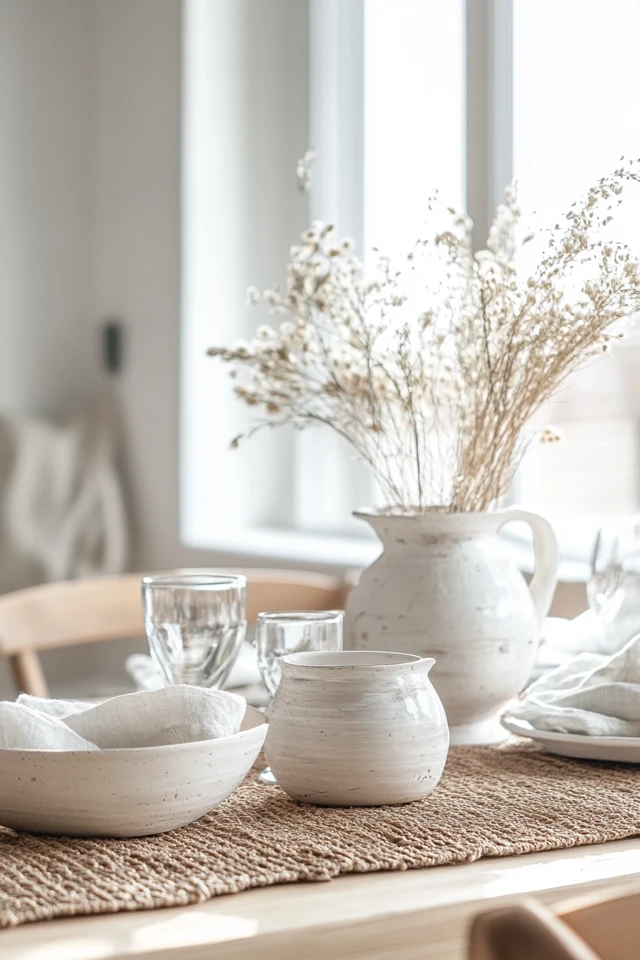
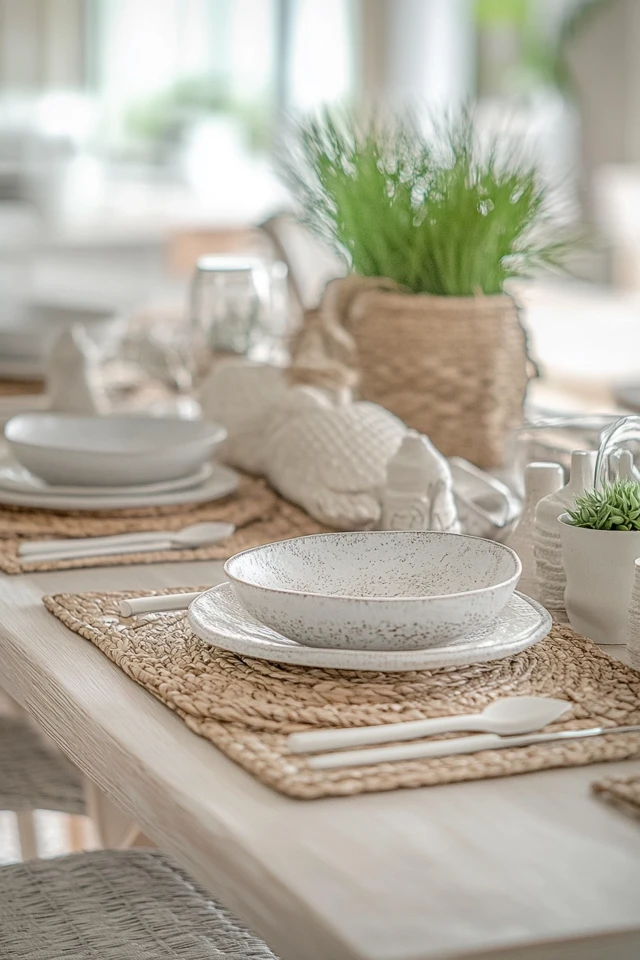

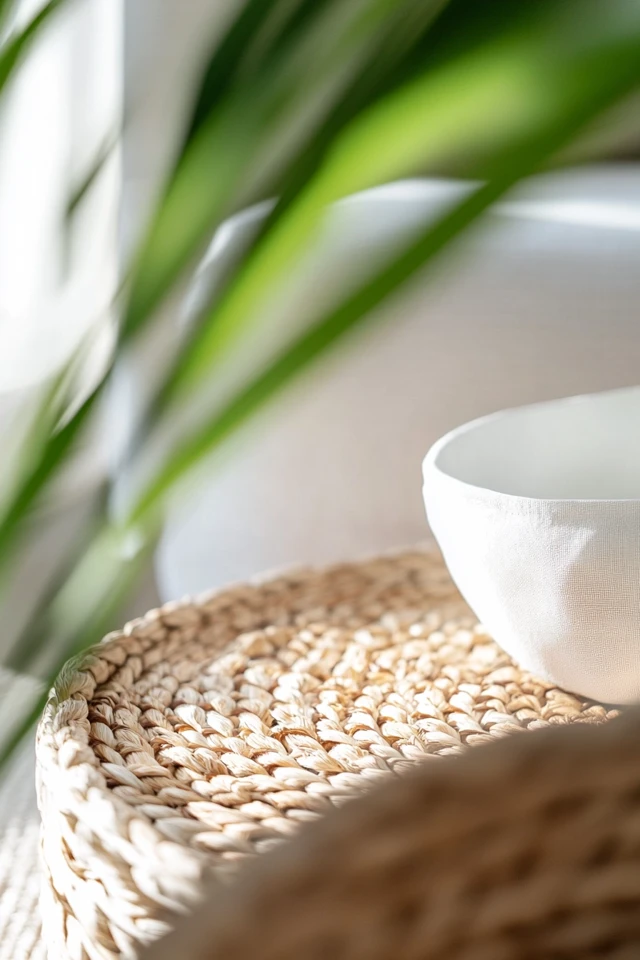
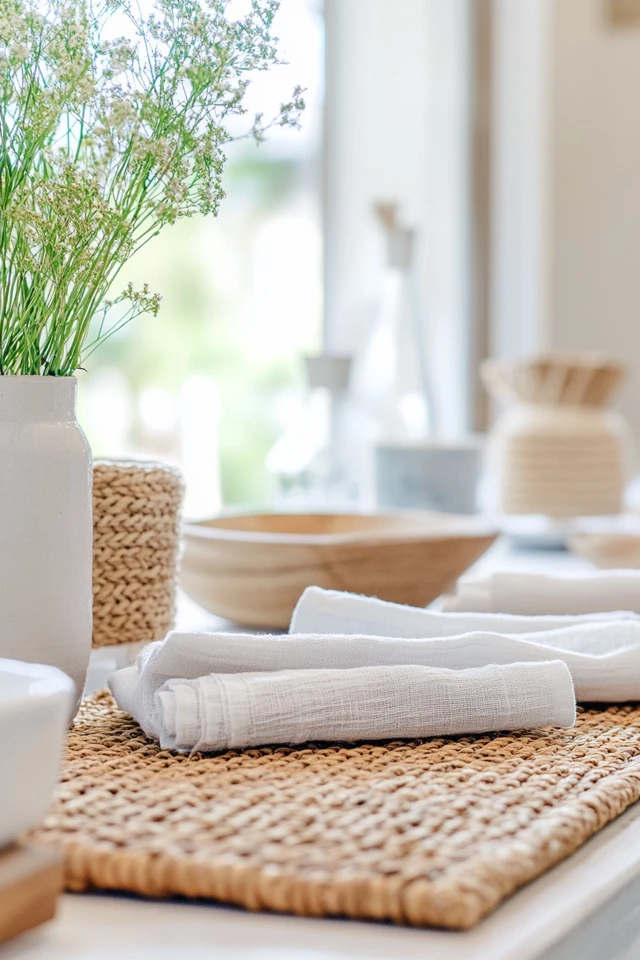
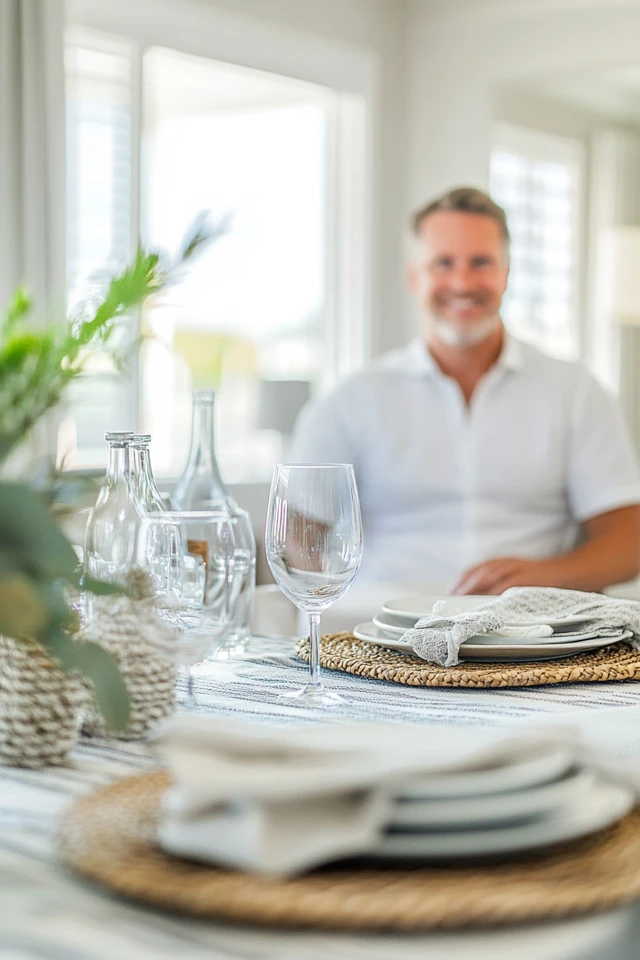
Conclusion
Creating a bright and airy coastal dining room is all about blending natural elements, soft colors, and thoughtful design choices. Whether you’re working with a small space or a large dining area, incorporating coastal touches like natural textures, layered textiles, and statement lighting can completely transform the room into a breezy, seaside-inspired retreat.
When I walk into a coastal dining room, I’m instantly transported to my favorite beach vacations—morning coffee with the sea breeze, long dinners watching the sunset. By implementing these ideas, you can capture that feeling in your own home and make every meal feel like a coastal getaway.
Now it’s your turn—bring the sea home and let the light and tranquility of coastal design fill your dining room.
FAQs
1. What colors are best for a coastal dining room?
Stick to light, neutral colors like white, beige, and sandy tones, paired with accents of soft blues, greens, and grays.
2. What type of lighting works best in a coastal dining room?
Statement lighting made from natural materials like rattan, driftwood, or capiz shells enhances the coastal vibe. Clear glass fixtures also work beautifully to mimic the clarity of the ocean.
3. How can I incorporate coastal decor without going overboard?
Focus on subtle touches like natural textures, light colors, and a few beach-inspired decor items like seashells or coral sculptures. Keep the overall look clean and minimalist.
4. Are jute rugs practical for a dining room?
Yes, jute rugs are durable and bring in natural texture. However, be cautious with spills—consider a rug with a blend of synthetic materials for easier cleaning.
5. Can I mix coastal design with other styles?
Absolutely! Coastal design pairs well with farmhouse, Scandinavian, and modern styles. Focus on shared elements like natural materials and clean lines to create a cohesive look.

